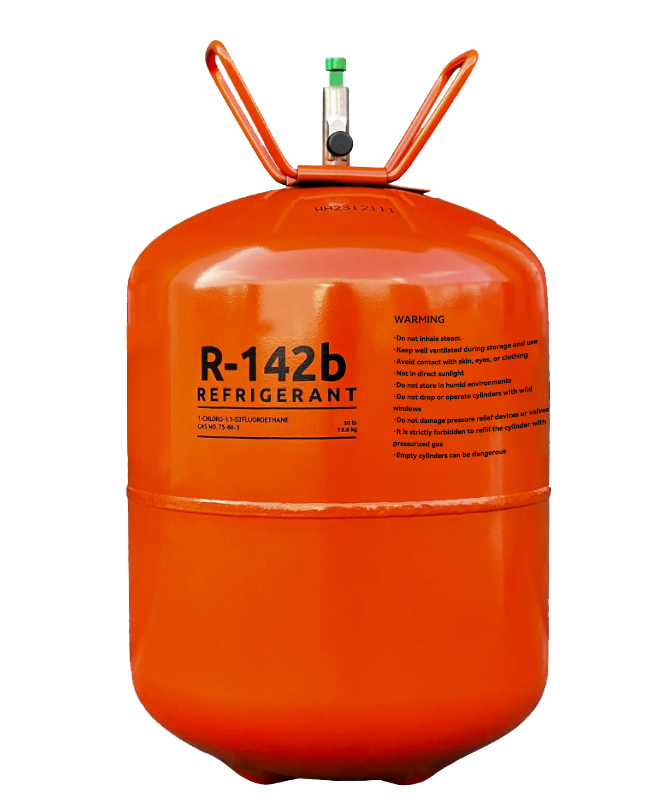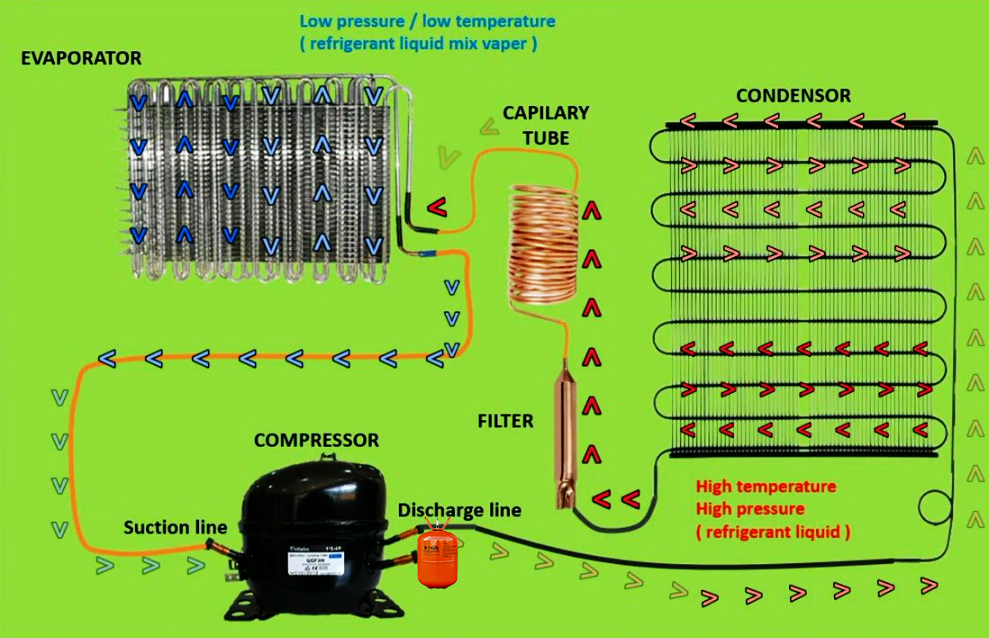The refrigeration principle of the refrigerator is based on the reverse Carnot cycle, in which refrigerant is the core medium, and the heat in the refrigerator is transported to the outside through the phase change process of vaporization endothermic – condensation exothermic.
Key parameters:
① Boiling point: Determines the evaporation temperature (the lower the boiling point, the lower the refrigeration temperature).
② Condensing pressure: The higher the pressure, the greater the compressor load (affecting energy consumption and noise).
③ Thermal conductivity: The higher the thermal conductivity, the faster the cooling speed.
You must know the 4 main types of refrigerant cooling efficiency:
1.R600a (isobutane, hydrocarbon refrigerant)
(1) Environmental protection: GWP (Global Warming Potential) ≈ 0, ODP (Ozone Destruction Potential) = 0, in line with European Union F – Gas regulations.
(2) Refrigeration efficiency: boiling point – 11.7 °C, suitable for household refrigerator freezer compartment (-18 °C) requirements, unit volume refrigeration capacity is about 30% higher than R134a, compressor displacement is small, and energy consumption is low.
(3) Case description: The 190L refrigerator uses R600a, with a daily power consumption of 0.39 degrees (energy efficiency level 1).
2.R134a (tetrafluoroethane)
(1) Environmental protection: GWP = 1300, ODP = 0, the European Union will ban the use of new equipment from 2020.
(2) Refrigeration efficiency: boiling point – 26.5 °C, low temperature performance is better than R600a, but the unit cooling capacity is low, requiring a large displacement compressor.
(3) The condenser pressure is 50% higher than that of R600a, and the compressor energy consumption is increased.
3.R32 (difluoromethane)
(1) Environmental protection: GWP = 675, which is 1/2 that of R134a, but it is flammable (to prevent leakage risk).
(2) Refrigeration efficiency: boiling point – 51.7 °C, suitable for inverter air conditioners, but the condensation pressure in the refrigerator is too high (twice as high as R600a), which can easily lead to compressor overload.
4.R290 (propane, hydrocarbon refrigerant)
(1) Environmental friendliness: GWP ≈ 0, ODP = 0, is the first choice of “future refrigerant” in the European Union.
(2) Refrigeration efficiency: boiling point – 42 °C, unit cooling capacity 40% higher than R600a, suitable for large commercial freezers.
Attention: Household refrigerators need to be tightly sealed due to flammability (ignition point 470 °C) (cost increases by 15%).
How does refrigerant affect refrigerator noise?
Refrigerator noise mainly comes from compressor vibration and refrigerant flow noise. Refrigerant characteristics affect noise in the following ways:
(1) High – pressure operation (condensing pressure 2.5MPa), the compressor needs high – frequency operation, the noise can reach 42dB (ordinary refrigerator about 38dB), low – pressure operation (condensing pressure 0.8MPa), the compressor load is low, the noise is as low as 36dB.
(2) R134a has high viscosity (0.25mPa · s), and is prone to throttling noise (similar to “hiss” sound) when flowing through the capillary tube. R600a has low viscosity (0.11mPa · s), smoother flow, and reduced noise by about 2dB.
Note: The R290 refrigerator needs to add an explosion – proof design (such as a thickened foam layer), but it may cause the box to resonate and the noise to rise by 1 – 2dB.
How to choose a refrigerator refrigerant type?
R600a has low noise for home use, the cost accounts for 5% of the total price of the refrigerator, R290 has high environmental protection, meets European Union standards, the price is 20% more expensive than R600a, R134a is compatible, suitable for old refrigerators, R32 is immature, choose carefully!
Refrigerant is the “blood” of the refrigerator, and its type directly affects energy consumption, noise, safety and service life. For ordinary consumers, R600a is the best choice for current comprehensive performance, and R290 can be considered for the pursuit of extreme environmental protection. When purchasing, you can confirm the type of refrigerant through the nameplate logo on the back of the refrigerator (such as “Refrigerant: R600a”) to avoid being misled by marketing concepts such as “frequency conversion” and “frost – free”.
Post time: Mar-26-2025 Views:



